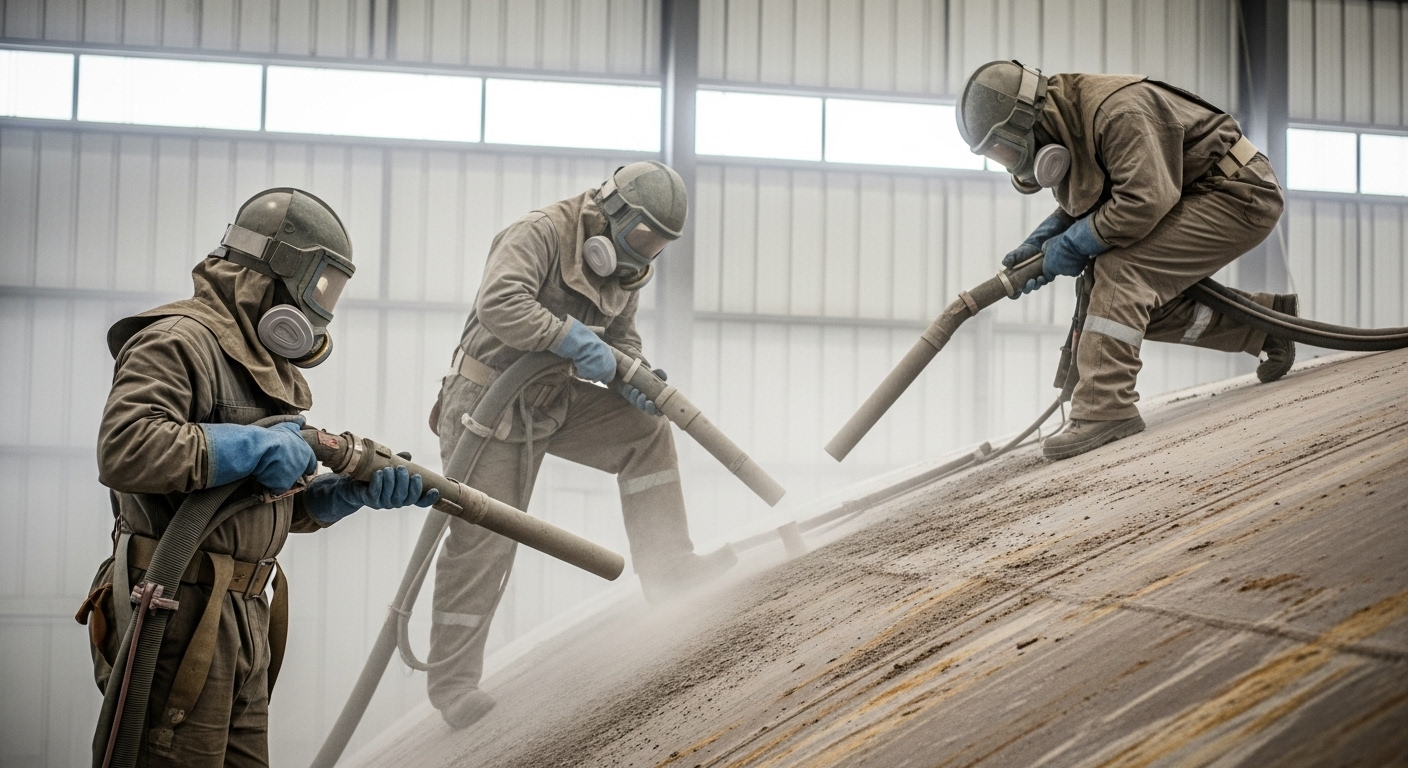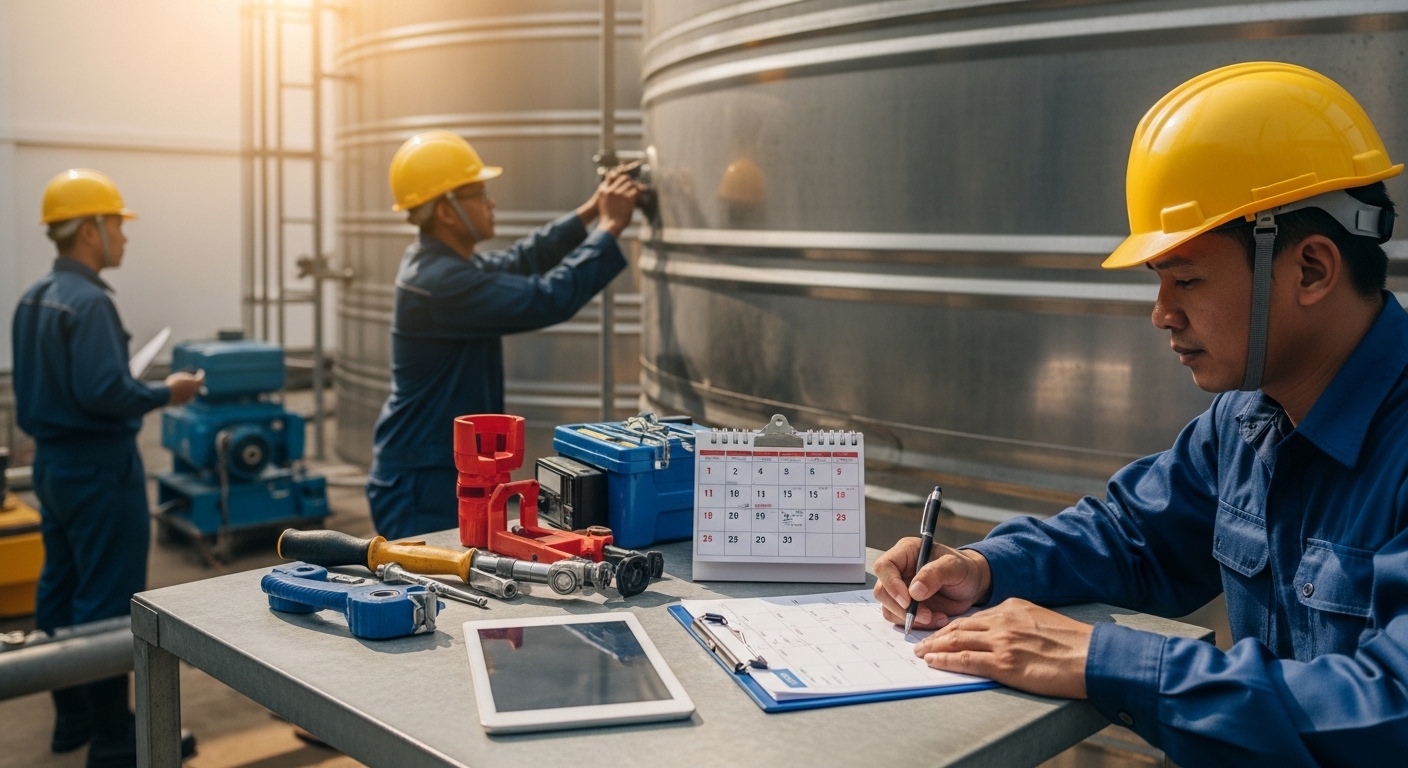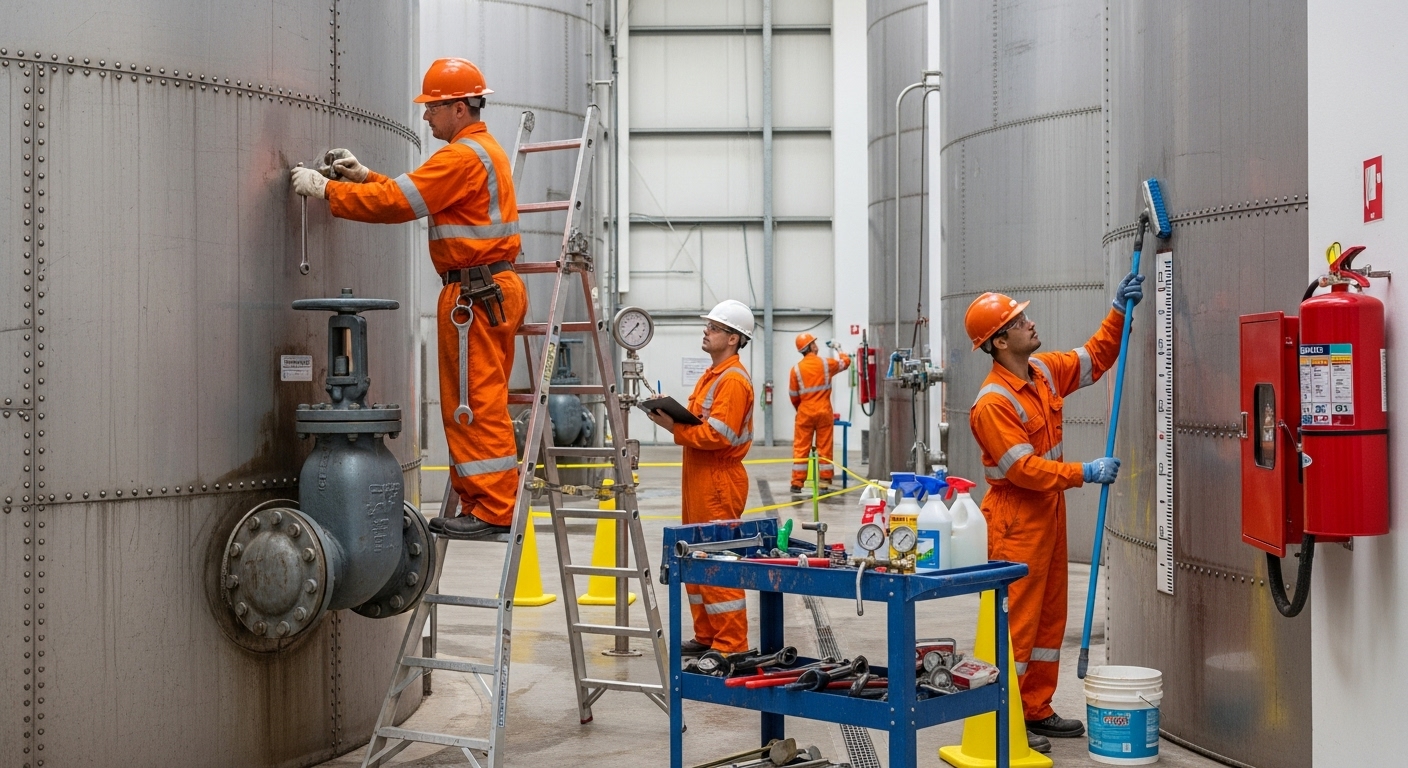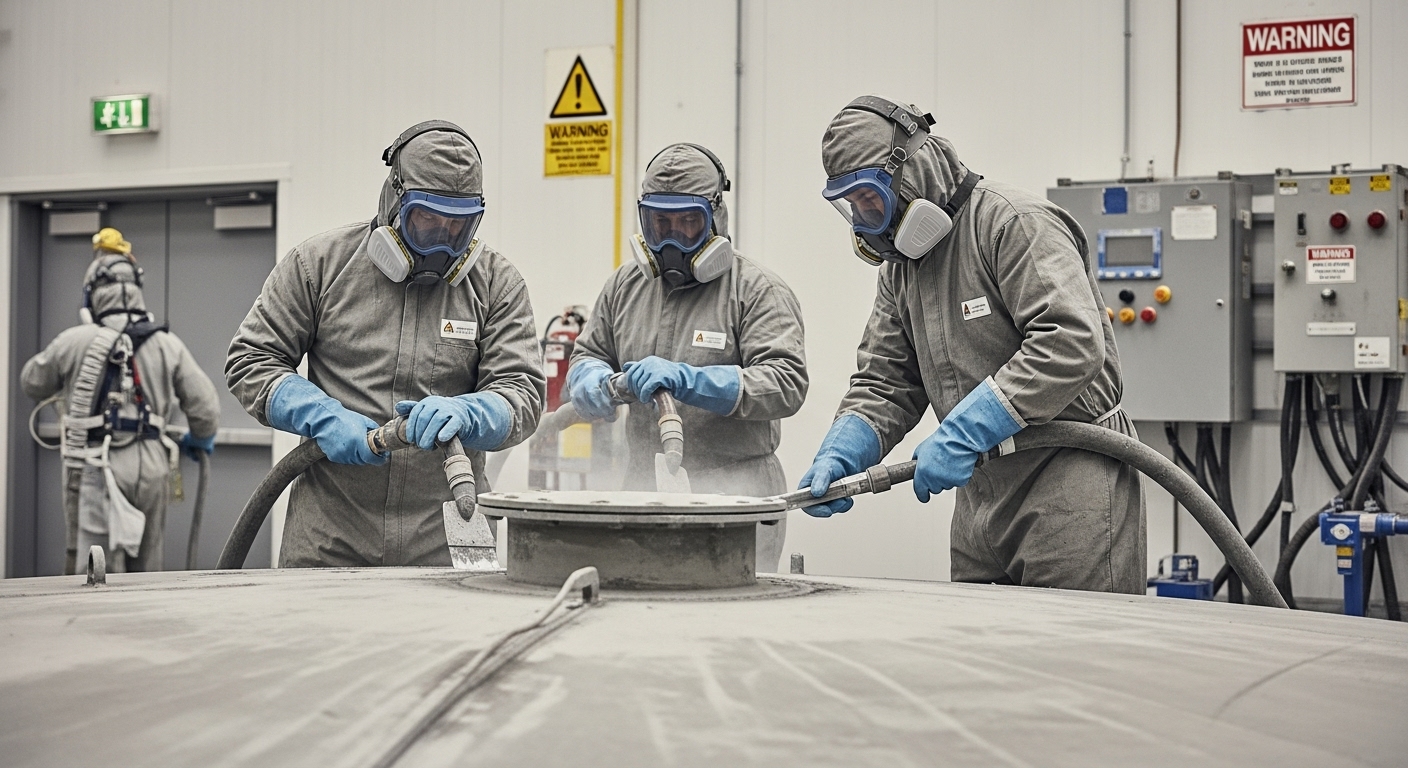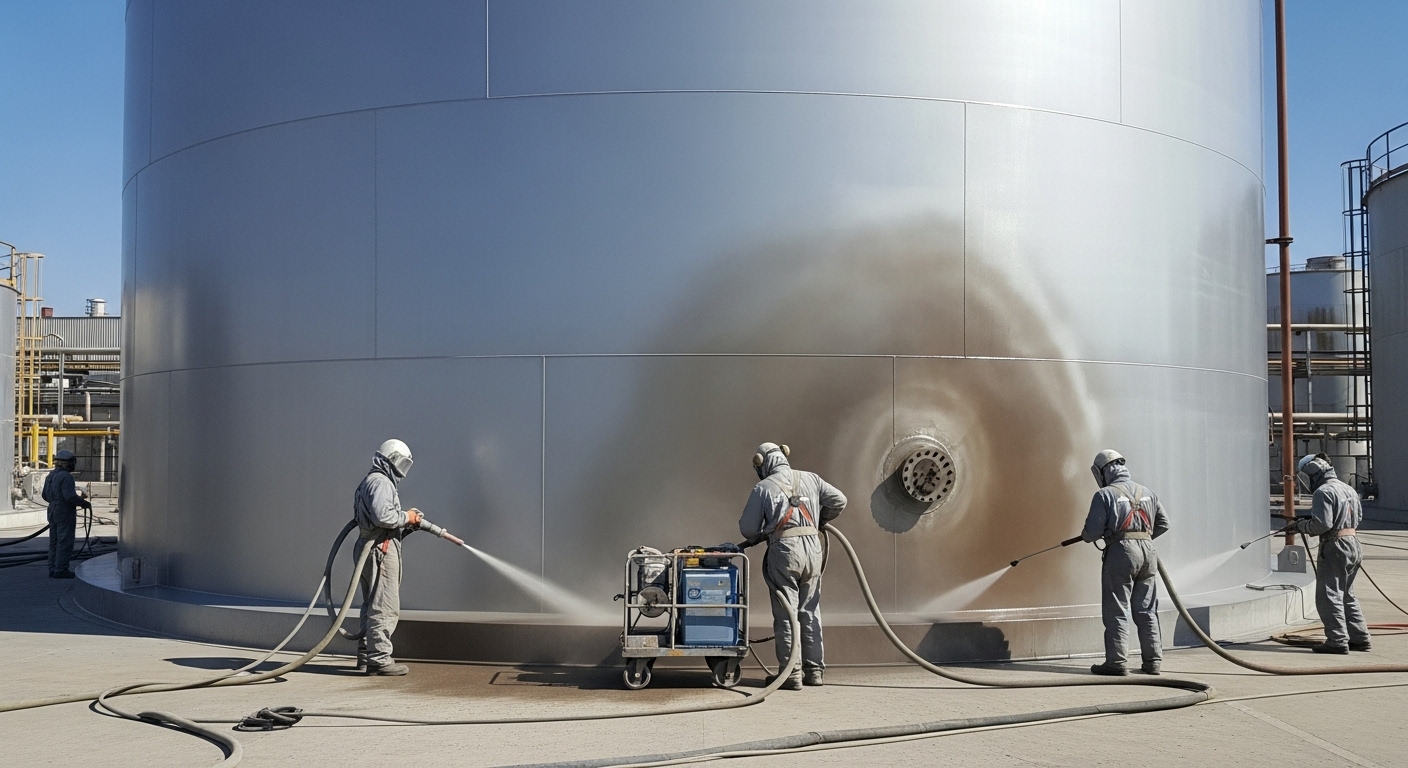When people think about painting water tanks, bridges, or industrial structures, the focus usually jumps straight to the type of paint or coating being used. But here’s the truth: the real foundation of a lasting paint job doesn’t start with the paint—it starts with the surface.
The surface preparation importance cannot be overstated. Without proper preparation, even the most advanced coating system is doomed to fail long before its expected lifecycle. Rust creeps back, adhesion weakens, and costly rework becomes inevitable.
Think of it like building a house—you wouldn’t put a roof on without making sure the foundation is solid. The same principle applies here. Whether you’re aiming for maximum coating longevity, preventing premature paint failure, or reducing future maintenance costs, proper surface prep is the make-or-break factor.
Let’s dive into why preparation matters so much, what standards guide it, and how it directly shapes the lifespan of your paint.
The Core of Surface Preparation Importance: Why Paint Longevity Depends on It
The biggest misconception is that high-quality paints guarantee durability on their own. In reality, paint is only as strong as the surface it bonds to. If steel is covered in contaminants, rust, or old coatings, the bond between paint and metal weakens dramatically. That’s where paint adhesion becomes the central issue.
Every specification in industrial coating work emphasizes cleaning, blasting, and profiling the substrate first. Why? Because without removing corrosion and achieving proper profile depth, coatings can peel, blister, or crack. This is why industry professionals spend as much time—sometimes even more—on preparation than on actual painting.
Skipping or rushing surface prep isn’t just a shortcut—it’s setting up the project for failure. Proper surface prep quality directly translates into fewer repairs, minimized downtime, and significantly longer coating lifecycles. In fact, studies show that up to 70% of premature coating failures trace back to poor surface preparation.
How Paint Adhesion Relies on Standards and Cleanliness
When contractors talk about prep, they’re not working from guesswork. There are global preparation standards that define how clean and profiled a surface should be before coating application. These include guidelines from NACE, SSPC, and ISO—each describing levels of cleanliness, rust grade removal, and required blast profiles.
At the heart of it, paint adhesion is about creating the perfect surface for the coating to grip. Think about it: a smooth, oily, or contaminated surface is like trying to paint over glass—it looks fine at first, but the bond is weak. On the other hand, a properly blasted surface, free of dust, grease, and mill scale, allows coatings to anchor firmly.
Here’s where the inspection of prep quality becomes critical. Even with the best blasting, if quality checks are skipped, invisible contaminants can remain. Salt deposits, dust particles, or even slight rust can sabotage adhesion, leading to premature coating breakdown.
Extending Coating Longevity Through Proper Preparation
Every facility manager wants coatings that last longer, and this is where the connection between surface preparation importance and coating longevity becomes clear. Paint systems are designed with lifespans in mind—but that lifespan assumes prep was performed correctly.
Take a water tank, for example. Without removing rust and achieving a consistent surface profile, even the strongest coating system can begin to fail in a few years. But when prep meets standards, coatings can last decades with only minor touch-ups. That’s a massive difference in lifecycle costs.
This is also where the paint selection impact comes into play. Even the right paint type—epoxy, polyurethane, or zinc-rich primers—can’t make up for poor prep. However, when proper prep and the right coating align, you maximize durability, performance, and protection against corrosion.
The money saved in deferred repainting cycles often outweighs the upfront preparation cost many times over.
Why Surface Prep Quality Reduces the Risk of Paint Failure
Let’s talk failure. Peeling, bubbling, cracking—these are not just cosmetic problems. They compromise the protective barrier between steel and the environment. Once that barrier is lost, corrosion accelerates rapidly.
Most of these issues trace back to weak adhesion, which is itself tied to poor preparation. Failure happens when:
- The surface wasn’t cleaned properly, leaving contaminants.
- Blasting didn’t achieve the correct profile for coating grip.
- Prep wasn’t inspected to meet surface cleanliness standards.
That’s why attention to surface prep quality is like an insurance policy against early breakdown. In fact, focusing on prep often leads to maintenance frequency reduction over the lifecycle of a tank or structure. Fewer failures mean fewer costly shutdowns, which is invaluable for industries that rely on uninterrupted operations.
The Link Between Paint Failure Prevention and Lifecycle Costs
The upfront cost of thorough prep can look high—but here’s the bigger picture. Neglecting surface prep means repainting sooner, which multiplies long-term costs. And these aren’t just about paint and labor. Downtime, tank outages, and environmental risks from coating failure add to the burden.
Proper paint failure prevention comes down to investing in preparation. It’s the step that determines whether a paint job lasts three years or thirty. That’s a difference of millions in lifecycle savings when scaled across large facilities or municipalities.
Here, coating performance directly ties back to the smallest details of prep—surface contamination removal, salt checks, and dust control. When done right, you’re not just painting a tank—you’re extending its entire coating lifecycle and protecting it against harsh conditions.
Why Investing in Proper Surface Preparation Protects Your Paint and Your Future
When you peel everything back, the message is simple: the surface preparation importance decides the success or failure of every paint project. Skipping or rushing this step is like building a house on sand—it may look fine today, but it won’t last. Proper prep ensures stronger paint adhesion, longer-lasting protection, and reliable paint failure prevention.
It reduces the need for costly repairs, minimizes downtime, and protects investments for the long haul. At the same time, choosing the right paint system matters. The paint selection impact works hand-in-hand with preparation, and only together do they create coatings that stand the test of time.
Combine that with rigorous inspection of prep quality and you’re setting your project up for maximum success. Strong prep today means lower costs tomorrow, thanks to maintenance frequency reduction and extended durability.
Ready to protect your assets for decades? Invest in Proper Surface Preparation and secure long-lasting performance.


